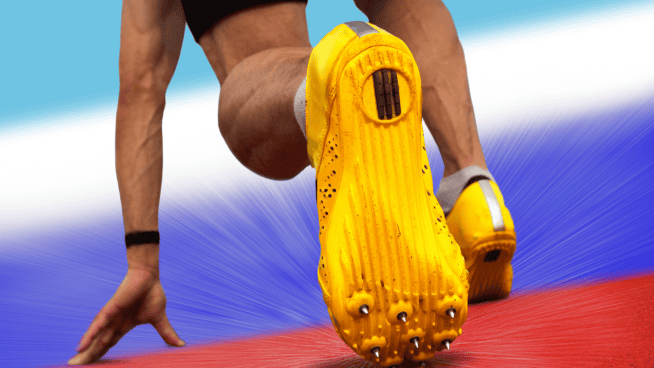Baseball Catcher Technique Part 8, Youth Catcher Drills
Editor’s note: This is the eighth in a series of articles on baseball catcher technique. It provides fundamental drills for young players. These drills should be performed in a controlled environment with a coach or parent teaching the young catcher.
The catcher’s main objectives are to catch the baseball, block the baseball on errant pitches and throw out base runners.
Receiving Pitches
The catcher can perform this drill with or without catching gear.
- Catcher assumes the receiving stance holding his mitt in front of his sternum.
- Coach stands 6-8 feet away and tosses the baseball so the catcher can catch it easily.
- The goal is to teach the catcher how to catch pitches in different locations and with “soft hands.” If the catcher attempts to catch the ball with “hard hands,” he will not be able to hold the ball. Young catchers must learn to assume the proper receiving position and catch balls above their waist with one palm facing the ground. If the ball is thrown below the catcher’s waist, he should catch it with his palm facing the sky.
Blocking Baseballs in the Dirt
The catcher wears gear for this drill.
- Coach tosses baseballs on the ground 1 or 2 feet, either directly in front of the catcher’s body or his knees. Each throw represents a ball pitched in the dirt.
- Catcher practices dropping to his knees and lining up his sternum with the ball.
- As the catcher progresses, the coach speeds up the velocity and the number of baseballs tossed per set, forcing the catcher to perform at a faster pace.
RELATED: Baseball Catcher Technique, Part 2
Throwing Runners Out
The catcher must be able to throw the ball on a line to a fielder to shut down opposing runners.
- Coach stands about 20 feet from the catcher.
- Catcher throws with a four-seam grip and keeps the ball on line with the coach.
- Catcher makes sure the ball rotates with backspin.
- Increase the distance of throws until the catcher reaches the appropriate distance for throws to second base. This drill allows the catcher to gain confidence when throwing to second base with consistent accuracy, increasing the distance after learning how to throw on a line.
RELATED: Baseball Catcher Drills and Technique, Part 3
Gaining Foot Speed
The catcher needs to be on a dirt surface for this drill.
- Coach draws a T in front of the catcher with the top 3 feet away from the catcher and the line directly between the catcher’s knees.
- Catcher works on transitioning from the receiving stance to the throwing position.
- As the catcher transitions into the throwing stance, he should land with his left foot on the top of the T and his right foot on the line of the T. This ensures his feet are lined up with the target.
- Catcher should remain low, in an athletic stance, throughout the drill.
- Coach stands behind the catcher with a bat at a 45-degree angle above the catcher’s head to keep the catcher low in his stance.
- Perform at a fast pace to replicate a throws to second.
Pre-Game Drills
After the catcher gets loose with a dynamic warm-up, he needs to perform some sport-specific movements. Perform 10 repetitions of each drill before every game.
- Receiving throws (catch strikes and hold the ball for 1 second)
- Block the ball
- Receive a pitched ball and work on footwork to second base (without making a throw)
RECOMMENDED FOR YOU
MOST POPULAR
Baseball Catcher Technique Part 8, Youth Catcher Drills
Editor’s note: This is the eighth in a series of articles on baseball catcher technique. It provides fundamental drills for young players. These drills should be performed in a controlled environment with a coach or parent teaching the young catcher.
The catcher’s main objectives are to catch the baseball, block the baseball on errant pitches and throw out base runners.
Receiving Pitches
The catcher can perform this drill with or without catching gear.
- Catcher assumes the receiving stance holding his mitt in front of his sternum.
- Coach stands 6-8 feet away and tosses the baseball so the catcher can catch it easily.
- The goal is to teach the catcher how to catch pitches in different locations and with “soft hands.” If the catcher attempts to catch the ball with “hard hands,” he will not be able to hold the ball. Young catchers must learn to assume the proper receiving position and catch balls above their waist with one palm facing the ground. If the ball is thrown below the catcher’s waist, he should catch it with his palm facing the sky.
Blocking Baseballs in the Dirt
The catcher wears gear for this drill.
- Coach tosses baseballs on the ground 1 or 2 feet, either directly in front of the catcher’s body or his knees. Each throw represents a ball pitched in the dirt.
- Catcher practices dropping to his knees and lining up his sternum with the ball.
- As the catcher progresses, the coach speeds up the velocity and the number of baseballs tossed per set, forcing the catcher to perform at a faster pace.
RELATED: Baseball Catcher Technique, Part 2
Throwing Runners Out
The catcher must be able to throw the ball on a line to a fielder to shut down opposing runners.
- Coach stands about 20 feet from the catcher.
- Catcher throws with a four-seam grip and keeps the ball on line with the coach.
- Catcher makes sure the ball rotates with backspin.
- Increase the distance of throws until the catcher reaches the appropriate distance for throws to second base. This drill allows the catcher to gain confidence when throwing to second base with consistent accuracy, increasing the distance after learning how to throw on a line.
RELATED: Baseball Catcher Drills and Technique, Part 3
Gaining Foot Speed
The catcher needs to be on a dirt surface for this drill.
- Coach draws a T in front of the catcher with the top 3 feet away from the catcher and the line directly between the catcher’s knees.
- Catcher works on transitioning from the receiving stance to the throwing position.
- As the catcher transitions into the throwing stance, he should land with his left foot on the top of the T and his right foot on the line of the T. This ensures his feet are lined up with the target.
- Catcher should remain low, in an athletic stance, throughout the drill.
- Coach stands behind the catcher with a bat at a 45-degree angle above the catcher’s head to keep the catcher low in his stance.
- Perform at a fast pace to replicate a throws to second.
Pre-Game Drills
After the catcher gets loose with a dynamic warm-up, he needs to perform some sport-specific movements. Perform 10 repetitions of each drill before every game.
- Receiving throws (catch strikes and hold the ball for 1 second)
- Block the ball
- Receive a pitched ball and work on footwork to second base (without making a throw)










